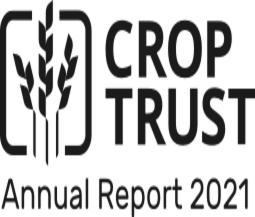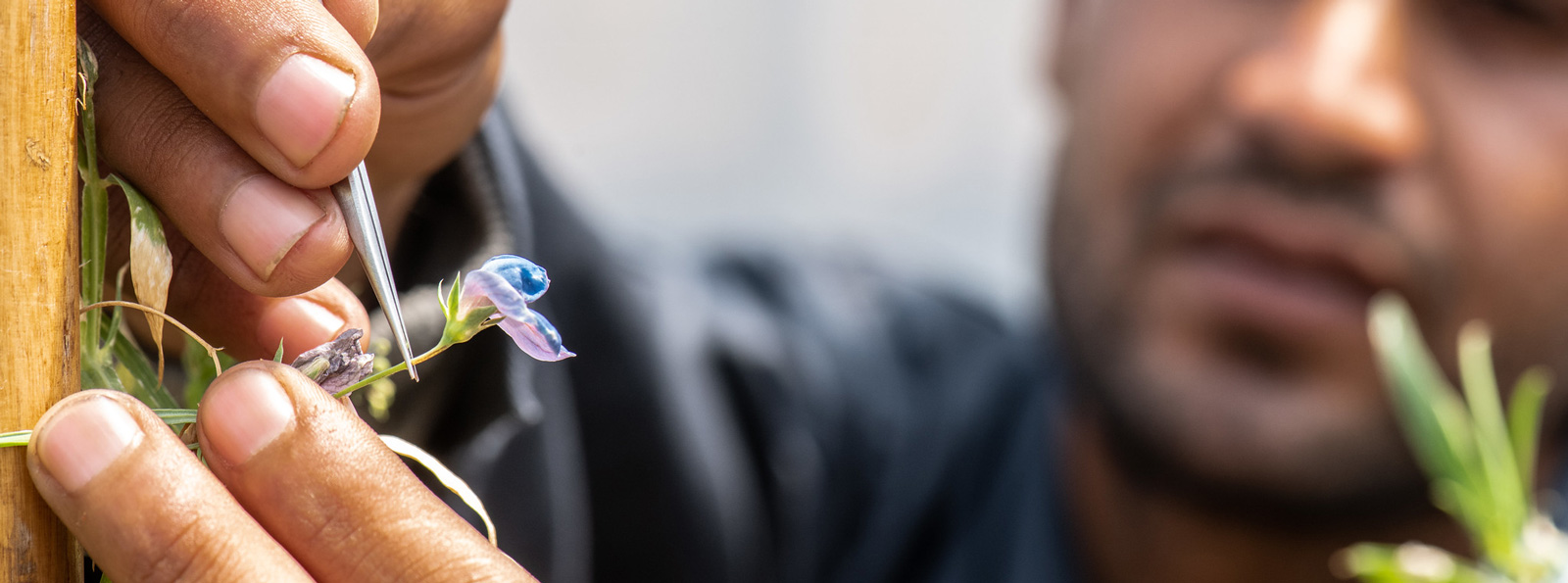Breakthroughs in Breeding Grasspea and Finger Millet
The project, “Safeguarding crop diversity for food security: Pre-breeding complemented with Innovative Finance,” funded by the Templeton World Charity Foundation, Inc., made major strides in its work on pre-breeding grasspea and finger millet using crop wild relatives and landraces.
At A Glance
The Crop Trust–Templeton project builds on the Crop Wild Relatives Project, connecting plant breeders working on grasspea and finger millet with the genetic diversity they need to improve these crops. It also explores innovative avenues for funding to contribute to the further development of the Crop Trust’s Endowment Fund. The project was launched in 2019 and will conclude in 2022.
- PROJECT TITLE: Safeguarding crop diversity for food security: Pre-breeding complemented with Innovative Finance
- HIGHLIGHTS FROM 2021: Resequencing of grasspea diversity collection has been completed, and the finger millet pre-breeding projects are making good progress.
- FUNDING PARTNER: Templeton World Charity Foundation, Inc.
- IMPLEMENTING PARTNERS: International Center for Agricultural Research in the Dry Areas (ICARDA), International Crops Research Institute for the Semi-Arid Tropics (ICRISAT), Ethiopian Institute of Agricultural Research (EIAR), Kenya Agricultural and Livestock Research Organization (KALRO), Department for Research Development (DRD), Tanzania, National Semi Arid Resources Research Institute (NaSARRI), Uganda, and John Innes Centre (JIC) and James Hutton Institute (JHI), UK
Farmers have a lot of knowledge on their crops, how they do under different environments, and so for those of us who are doing research it’s important that we regularly engage with farmers and understand what they are doing.
The project includes two mutually reinforcing elements: pre-breeding grasspea and finger millet using diverse genetic resources, including crop wild relatives and landraces; and exploring innovative and sustainable finance mechanisms to safeguard crop diversity in perpetuity.
The two crops are important for food security in a wide range of countries.
Grasspea is a food and forage crop highly valued in southern Asia and parts of sub-Saharan Africa and the Mediterranean region. However, when eaten as a large part of the diet it can permanently paralyze adults from the knees down and cause brain damage in children, a disorder named lathyrism. It is also highly susceptible to an aggressive parasitic weed, broomrape. These two characteristics limit its usefulness in some farming systems, particularly in the Mediterranean region.
Finger millet is a hardy crop that is well-adapted to arid areas in Africa and Asia. However, it is generally susceptible to diseases such as blast and relatively low yielding, which reduces its attractiveness to farmers.
Looking to the Genes
In 2021, the project completed the resequencing of a diverse collection of some 350 grasspea seed samples. This will be useful in identifying genes for key characteristics of the crop, such as those controlling levels of the toxin causing lathyrism, as well as traits such as yield and resistance to broomrape. Work has started on developing genetic markers for these key traits to help speed up breeding efforts.
Space-Age Breeding Tool
Scientists at ICARDA in Morocco, in cooperation with the John Innes Centre, are using a plant-growing method developed by NASA to develop new varieties of grasspea. This approach grows plants under controlled temperatures with up to 22 hours of light a day, allowing plant breeders to produce four generations of grasspea each year, halving the time it takes to produce a new variety.
Finger Millet
Pre-bred lines of finger millet that were selected by partners in Ethiopia, Tanzania and Uganda were multiplied in 2021. These all show promising characteristics, such as drought and heat tolerance and resistance to key diseases. All the partners have developed pre-breeding strategies and are crossing pre-bred lines from the project with varieties preferred by farmers. New seed samples from the three countries are being genotyped, along with all available finger millet seed samples conserved in genebanks in East Africa. This will greatly facilitate future breeding efforts.
Preparing the Foundations for Innovative Finance
The project continued to support efforts to explore innovative finance instruments and to identify suitable partners for implementation. Discussions were held with government and development finance institutions about the Food Security Bond concept—long-duration bonds supported by government guarantees to de-risk the investment.
The project held virtual workshops on crowdfunding and crop-specific fundraising strategies in late 2021. These allowed a deep dive into these promising approaches and provided an opportunity to share relevant experiences. Crowdfunding was deemed to be useful as a communications and outreach tool rather than for pure fundraising because of the small volume of funds that would likely be attracted. Discussions on crop-based fundraising strategies highlighted the importance of developing a compelling value proposition for the private sector and identified key next steps to take this approach forward.
In addition, the Crop Trust kickstarted the development of a financing strategy with the support of CCS, an external advisory firm with substantial fundraising experience. The CCS work complements the in-house efforts on innovative finance activities, such as the development of a Food Security Bond concept.
Related News and Resources
- The Templeton Pre-Breeding Project, project page
-
Fast-Tracking Food Security Using Space Science, blog, April 2021

